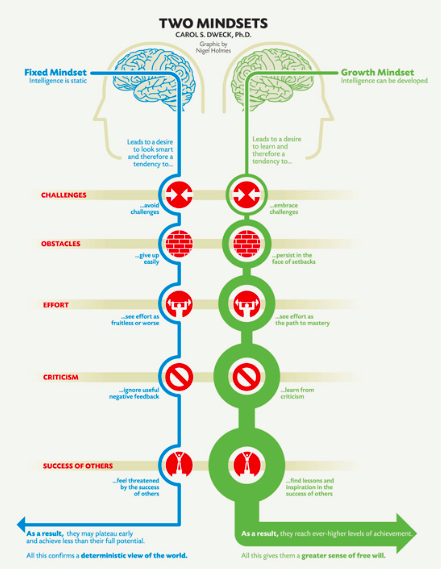My experience with Differentiated Instruction (DI) in a classroom setting is limited, however I do have experience with it in a one-on-one setting. During my years at university, I have tutored children with learning disabilities where the program requires that you tailor the 8 week program to the child’s needs, wants, interest and learning style. Activities are created by the tutor to engage the child in fun games while learning at the same time. One of the children I tutored was very active, so I created games that included motor functions so that they were not sitting in their chair the whole time. The improvements that I have seen with the children I tutor are tremendous, going from knowing 4 sight words to 60 in 8 weeks, all through literacy related games. The success of these tutoring sessions made me wonder how I could implement this in my future classroom.
Drake, Reid and Kolohon (2014) defines DI as “an approach that modifies instruction or assessment to suit the learning needs of individual or small groups of students” (pg. 172). DI is outlined in the Ontario Curriculum however based on my observations of classrooms, I question if it is being implemented or not. Given that multiple studies have found that it is effective in the classroom (Little, McCoach & Reis, 2014; Valiandes, 2015), every teacher should be implementing it. Valiandes (2015) found that those who were exposed to DI had statistically significant higher achievement levels than students who were not exposed to DI. Furthermore, DI was effective for students of all socioeconomic levels, readiness level or gender. Another study also found that students achieved similar and higher fluency and comprehension scores when teachers replaced whole and small group instruction with differentiated individual conferences as well as increased independent reading time (Little et al., 2014). In addition, some do’s and don’ts of DI can be found here.
 |
| ASCD (2015) |
My first blog explored the growth mindset, and in my opinion, DI can also help students foster a growth mindset. A main concept of DI is individualization of material, meaning that students will be able to learn topics that are interesting to them. If a student is invested in a topic or project, they will be more likely to persist through any failure, and embrace challenges; two factors of the growth mindset. Technology, my second blog topic, also makes DI implementation easier. For example, if each student has an iPad or laptop (BYOD or the school’s), then each child could be working on learning (whether through a game, research or creating on the device) independently and at their own pace.
The following video explains that implementation of DI is not difficult, it is just difficult for teachers to change existing teaching habits. Regardless, it is still very overwhelming, especially for new teachers, when there are many other responsibilities such as ensuring the curriculum is taught, managing classroom behaviours and ensuring that students are safe. This Professional Learning Guide can help teachers reflect on their lessons so that they can change their practices to implement DI. In addition, these Lesson Plan Templates will aid teachers in designing a lesson that will be effective in achieving DI, as well as creating a tiered lesson.
The following video explains that implementation of DI is not difficult, it is just difficult for teachers to change existing teaching habits. Regardless, it is still very overwhelming, especially for new teachers, when there are many other responsibilities such as ensuring the curriculum is taught, managing classroom behaviours and ensuring that students are safe. This Professional Learning Guide can help teachers reflect on their lessons so that they can change their practices to implement DI. In addition, these Lesson Plan Templates will aid teachers in designing a lesson that will be effective in achieving DI, as well as creating a tiered lesson.
Hawker Brownlow Education (2013)
It is essential to remember that DI is pointless without differentiated assessment. Tailoring learning to the student does not accomplish anything if you then use a type of assessment that is not tailored towards the students needs as well. In order to fully benefit your students, both differentiated instruction as well as assessment need to be implemented properly into your classroom.
Bower (2012)
Another factor we must consider is, is differentiation enough? Drake and colleagues (2014) explain the new emerging story that involves broadening differentiation to create personalization. This embraces a student-oriented technique rather than teacher driven. Students learning is guided by their own interests, passions and learning styles, and the class shares a common goal. The teachers role is a facilitator of this student-guided strategy. Looking at the benefits of differentiation, I can only imagine how much better personalization would be in the classroom. However, we must consider; how much more difficult would this be to implement? And, would changes to the curriculum need to happen for this to be implemented?
As future teachers, we will be acting out this new story. It is therefore critical for us to understand the types of instructional strategies that can be used in our classroom and how they impact and benefit students.
Fon (2014)
References
ASCD [infographic]. (2015). Retrieved from http://www.ascd.org/research-a-topic/differentiated-instruction-resources.aspx
Bower [online comic]. (2012). Retrieved from URL http://www.joebower.org/2012/05/folly-multiple-choice.html
Drake, S. M., Reid, J. L., & Kolohon, W. (2014). Interweaving curriculum and classroom assessment: Engaging the 21st century learner. Toronto, ON: Oxford University Press.
Fon [online image]. (2014). Retrieved from http://www.tedxvienna.at/blog/a-king-in-one-country-a-servant-in-another/
Hawker Brownlow Education .(2013, July 30).Differentiation and the brain: A discussion with Carol-Ann Tomilson. Retrieved from https://www.youtube.com/watch?v=mLzCqoPFxRw
Little, C. A., McCoach, D. B., & Reis, S, M. (2014). Effects of differentiated reading instruction on student achievement in middle school. Journal of Advanced Academics 25(4), 384-402.
Valiandes, S. (2015). Evaluating the impact of differentiated instruction on literacy and reading in mixed ability classrooms: Quality and equity dimensions of education effectiveness. Studies in Educational Evaluation, 45, 17-26.






